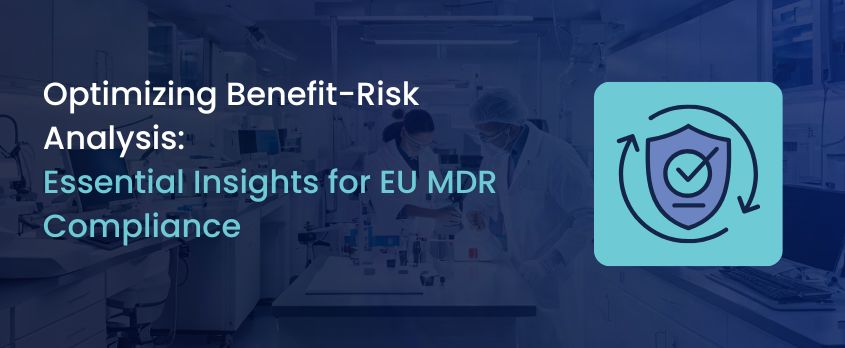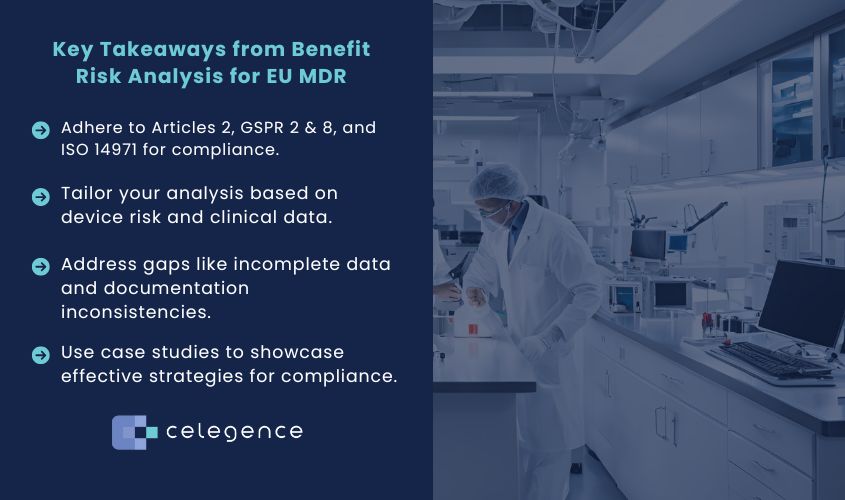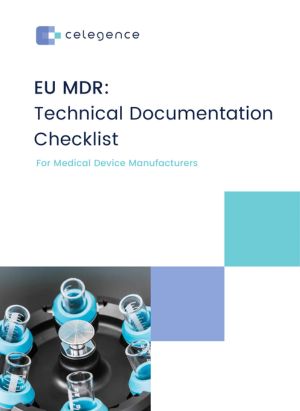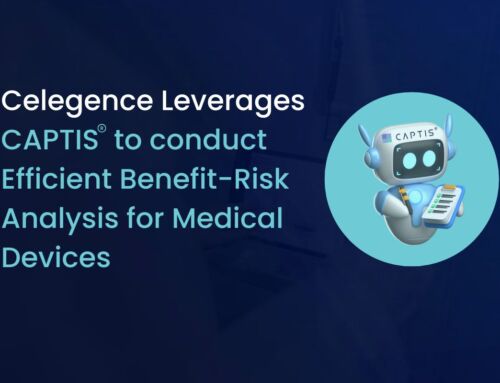
Mastering Benefit-Risk Analysis for EU MDR Compliance
Benefit-risk analysis is a cornerstone of compliance for medical device manufacturers under the EU MDR. This rigorous process evaluates whether the benefits of a device outweigh its associated risks, ensuring patient safety and regulatory approval. With the increasing complexity of medical devices and evolving regulations, understanding and implementing effective benefit-risk analysis is critical.
But what does it take to successfully navigate these complexities? In this blog, we delve into insights shared during a recent webinar to explore key methodologies, tools, and best practices to excel in this domain.
Understanding Benefit-Risk Analysis
Benefit-risk analysis is not a one-time activity but a continuous process integrated throughout a device’s lifecycle. Its primary goal is to demonstrate that the benefits of a device significantly outweigh its risks, thereby justifying its acceptability for patient use. Key regulatory frameworks guiding benefit-risk assessments include:
- EU MDR Article 2 and GSPR 2 and 8: These articles outline essential definitions and data presentation requirements for demonstrating acceptability.
- ISO 14971: Offers comprehensive guidelines for risk management, including identifying, assessing, and mitigating risks.
- MDCG 2026 Guidance: Provides clinical evaluation pathways for effective benefit-risk analysis.
- MedDev 2.7.1 Revision 4: Offers examples and distinctions between qualitative and quantitative assessments.
By aligning benefit-risk analysis with these frameworks, manufacturers ensure their devices meet regulatory expectations while prioritizing patient safety. Now, let’s take a closer look at the key components that form the foundation of an effective benefit-risk assessment.
Key Components of Benefit-Risk Analysis
An effective benefit-risk analysis revolves around several fundamental components:
- Benefit: Represents the positive impact on patient health, such as improved diagnosis, management, or treatment outcomes. Benefits can be direct (e.g., life-saving interventions) or indirect (e.g., aiding clinicians in decision-making).
- Risk: Combines the probability of harm occurring with the severity of that harm. Risks could range from mild side effects to serious adverse events.
- Residual Risk: The remaining risk after mitigation measures have been applied. It’s crucial to acknowledge and document these risks transparently.
- Benefit-Risk Ratio: A comparative measure that evaluates whether the benefits justify the associated risks, expressed in qualitative or quantitative terms.
These components provide the building blocks for a robust analysis. But why is this process so important for manufacturers and regulators alike? Let’s explore the broader significance of benefit-risk analysis.
Why Benefit-Risk Analysis Matters
Conducting a robust benefit-risk analysis is crucial for several reasons:
- Ensuring Patient Safety – The primary purpose of medical devices is to enhance patient outcomes. Benefit-risk analysis ensures that devices provide more good than harm, identifying potential risks and addressing them proactively. This approach is an ethical obligation for manufacturers and healthcare providers alike.
- Regulatory Compliance -Under the EU MDR, benefit-risk analysis is a mandatory component of Clinical Evaluation Reports (CERs) and risk documentation. Regulators demand detailed justifications of the benefit-risk profile, supported by clinical evidence, to approve devices for market use. A weak analysis could result in delays or rejections.
- Informed Decision-Making – Benefit-risk assessments provide valuable insights for clinicians and patients, enabling informed choices. For example, identifying contraindications or subpopulations where a device’s risks outweigh its benefits helps tailor its use to appropriate cases.
- Facilitating Continuous Improvement – Real-world performance data collected post-market can highlight areas for improvement. Benefit-risk analysis allows manufacturers to refine device design, labeling, or risk control measures to align with state-of-the-art practices and maintain a competitive edge.
Understanding the importance of benefit-risk analysis sets the stage for examining the methodologies that bring it to life. How do manufacturers choose the right approach for their devices? Let’s explore.

Methodologies for Benefit-Risk Analysis
Benefit-risk analysis can be conducted using qualitative or quantitative approaches, depending on the device’s risk class, clinical data availability, and intended use. Let’s explore these methodologies in detail
1. Qualitative Analysis
Qualitative analysis relies on descriptive terms rather than numerical data to evaluate benefits and risks. This approach is ideal for low-risk devices or those with indirect benefits. Examples include:
- Devices with Indirect Benefits: Diagnostic tools or assistive devices that support better decision-making for clinicians.
- Procedural Efficiency: Devices improving healthcare workflows or reducing recovery times.
Common Parameters in Qualitative Analysis
- End-User Benefits: How the device supports healthcare providers or caregivers.
- Quality of Life Improvements: Enhancements in patient well-being due to reduced recovery times or improved procedural outcomes.
- Minor Risks: Usability challenges or procedural complications that are easily manageable.
Example: A wound bandage’s qualitative analysis might highlight benefits like enhanced healing environments while documenting minor risks such as skin irritation.
For devices with higher complexity or risk, however, qualitative analysis may not suffice. This brings us to quantitative methodologies.
2. Quantitative Analysis
Quantitative analysis employs statistical and numerical methods to provide a data-driven evaluation of benefits and risks. This method is crucial for high-risk devices where objective evidence is essential.
Techniques for Quantitative Analysis
- Benefit-Risk Ratio: Compares the frequency and severity of benefits versus risks.
- NNT (Number Needed to Treat) vs. NMH (Number Needed to Harm): Calculates how many patients need treatment to observe one benefit or one harm, respectively.
- QALY (Quality Adjusted Life Years): Quantifies both the quality and duration of life improvements a device offers.
Example: For a cardiac stent, if the NNT is 25 (indicating significant benefit) and the NMH is 200 (indicating low harm likelihood), the device’s favorable profile supports its use.
Both approaches play a critical role in addressing the challenges manufacturers face during regulatory submissions. Let’s examine common hurdles and how to overcome them.
Challenges Highlighted by Notified Bodies
Notified bodies frequently flag common shortcomings in benefit-risk assessments, such as:
- Insufficient Clinical Evidence: Broad claims unsupported by targeted, robust data.
- Incomplete Risk Characterization: Missing details about risk severity, likelihood, or affected patient populations.
- Over-Reliance on Qualitative Analysis: Lack of quantitative insights to substantiate benefit-risk profiles for high-risk devices.
- Documentation Inconsistencies: Misalignment across CERs, risk management files, and post-market surveillance reports.
By addressing these gaps, manufacturers can strengthen their submissions and ensure alignment with regulatory expectations.
Celegence’s Role in Simplifying Benefit-Risk Analysis
Celegence leverages innovative tools like CAPTIS® to streamline the benefit-risk assessment process. CAPTIS integrates:
- Literature reviews and adverse event data.
- Automated alerts for document updates.
- Advanced search capabilities for discrepancy detection.
By centralizing data and automating workflows, CAPTIS saves time, reduces errors, and ensures comprehensive regulatory submissions. With these tools, manufacturers can focus on delivering safe and effective devices without getting bogged down in complex processes.
Conclusion
Benefit-risk analysis is integral to both patient safety and regulatory success under the EU MDR. By employing the right methodologies—whether qualitative or quantitative—and leveraging cutting-edge tools, manufacturers can confidently navigate regulatory challenges and demonstrate their commitment to delivering safe and effective medical devices.
The question now is: Are you equipped to master your benefit-risk analysis? Contact Celegence to learn how we can support your regulatory needs.
Download our EU MDR checklist for actionable technical documentation requirements. The checklist highlights all the key areas that you need to be aware of and serves as a guide to help get you EU MDR compliant. In conjunction with this checklist, we are also able to provide you with bespoke plans on how to get your business up to speed. Celegence provides expertise for every step of the Medical Device product lifecycle management for RA, QA and Clinical Departments of Medical Device companies.



